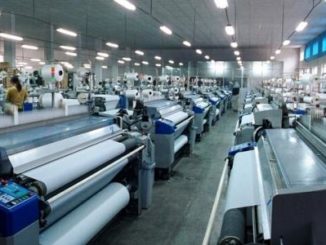Importing from China has proven to be profiting global businesses for many decades. China is still the default factory of the world with many popular items like clothing, shoes, furniture, electronics and other items exporting worldwide. However, it’s never an easy task especially for newbies with extremely complicated and costly process. Expected profits can often be cut off by rising or fluctuating of shipping costs, exchange rates, shipping costs, custom duties, unexpected delays in manufacturing, long shipping time, etc.
Here’s a step by step guide we compiled from our 15+ years of experience in import and export business in China.
Table of Contents
How to import from China in 2024?
Step #1 Check your import license
Step #2 Check what kind of goods you want to import
Step #3 Make sure the imported goods comply with regulations in your country
Step #4 Estimate total costs of the goods
Step #5 Source manufacturers in China and place orders
Step #6 Arrange shipping
Step #7 Keep track of your cargo and prepare for the arrival
Step #8 Do custom declaration and obtain your shipment
Now let’s go into the details.
Step #1 Check your import license
When you buy goods from overseer as whether in the name of a business or as an individual, you become an importer. The first and foremost important thing to do is to check whether you have the import rights or whether you have to apply for import license first. If your package is small and is declared as personal use, couriers like DHL, UPS, FEDEX will take care of custom declaration and just deliver to your door. However, for commercial purpose you have to get all qualifications for importing from China.
Step #2 Check what kind of goods you want to import
For successful importer, choosing the right products for resell is vital to make profits. Collect as much information as possible about the products you want to import, i.e., product specification, and if possible, samples.
Product information plays a crucial role in the tariff rates. The tariff clarification number, also known as HS code, is used to evaluate the rate of tariffs to be applied to your goods.
We suggest going with these types of products.
- Products that you’re interested in
- Products in a niche market
- Products that are easy to ship, with low shipping cost per unit
Step #3 Make sure the imported goods comply with regulations in your country
Different countries have different regulations for imported goods. Some goods are prohibited from entering certain countries. Importing goods violating regulations of your country can cost you an arm and a leg in fines or even would be charged for legal responsibilities. In most cases, such goods would be detained or destroyed from entering the country. It’s the importer’s responsibility to make sure the goods to be imported comply with all the regulations of the entering country.
Step #4 Estimate total costs of the goods
Collect information of the goods from your supplier, then identity the HS code for each item. HS codes with Certificate of Origin(China) will determine the rate of duty to be applied to your goods.
Get the prices from your supplier, pay attention to the Incoterms as to which price the supplier give, FOB or CIF? Usually most Chinese suppliers go with FOB price.
What’s FOB?
FOB, abbreviated from Free on Board, the seller’s job is almost completed when the goods are delivered to the port and get loaded into the container. The buyer can chose and negotiate a better price with a forwarder of his/her choice.
What’s CIF?
CIF, which means Cost, Insurance and Freight, is considered as a more expensive solution as the seller is responsible for everything. One of the greatest disadvantages is buyers have to rely 100% on the seller as sellers uses forwarder of his/her choice.
Step #5 Source suppliers in China and place orders
Once you have selected suppliers in China, get a PI (Performa Invoice) for your purchase. The Performa Invoice should include goods you order in sequence, description, unit value, order quantity, total amount, weight, carton specifications, CBM as well as terms of purchase.
What’s PI?
PI, abbreviated from Performa Invoice, is a non-binding file to help budge your prospective purchase. It’s neither a purchase order, nor a contract with any legal obligation.
What to look out for?
1. Make sure your supplier will agree to ship to the latest port or the warehouse of your forwarder under FOB terms
For example, if you’re buying led from Guzhen, the latest port is either in Shenzhen or Guangzhou, make sure your supplier delivers there or do you have to load container from the supplier’s factory in Guzhen. It can greatly cut off the shipping costs if your supplier delivers to the port.
2. Keep in mind that shipping by sea takes quite long time
That means you have to plan few months ahead while compared with buying domestically. Besides, custom declaration, port handling…would also take a few days. In general, it’s suggested to order your goods at least 3 months earlier if you plan to ship by sea.
A few tips to consider
1. Don’t focus only on price
If something is too good to be true, then it certainly is. There’re countless real life lessons online people getting scammed by the so-called Chinese suppliers offering the same products at one fourth or even much less costs than other competitors. You would end up waiting for goods that would never be shipped or expect getting defective items. Insanely low prices usually come with high risks, either in quality, quantity or reputation.
2. Suppliers not able to clarify product details
If your supplier is not able to clarify the product details especially private label products, the chances are quite high that they’ll produce for you based on cost saving ways. Even the supplier say “yes” or “ok”, it doesn’t necessarily mean they understand your requirements, sometimes it’s more as a respective response they’re listening to you.
Make sure you double check the specification, manufacturing process or hire buying agents in Shenzhen for quality inspection before shipping.
Step #6 Arrange shipping
There’re many costs related to shipping goods internationally, including loading fee, renting truck, port handling, custom declaration, broker fee, etc. Each of these fees should be taken into consideration to get the complete costs.
A few tips to consider
1. Expect delays and plan ahead
For shipping by sea, delays happy frequently. Goods might be held by the Custom for inspection, vessel might not sail immediately as scheduled, etc.
Never expect that your cargo would leave the port as soon as completed production in the factory. First, shipping agents have to book vessel and container, then arrange loading and transportation to the port. Furthermore, it will take another 1-2 days for custom declaration.
For certain rare destinations, there’s only one route each week. Missing the day of this week means you have to wait till next week.
2. Get a reliable shipping agent
A good logistic partner with guaranteed smooth operations and manageable costs is essential for any import and export business.
Step #7 Keep track of the cargo and prepare for the arrival
For international shipping by sea it usually takes around 30 days depending on destinations. During this period, prepare all documents, i.e., Bill of Lading, Commercial Invoice, Packing List, your export license…any document required by your Custom.
Step #8 Do custom declaration and obtain your shipment
When you get notified that your goods arrive, contact your custom broker for custom declaration. After approval of custom declaration, it’s time to pick up your shipment.


Leave a Reply